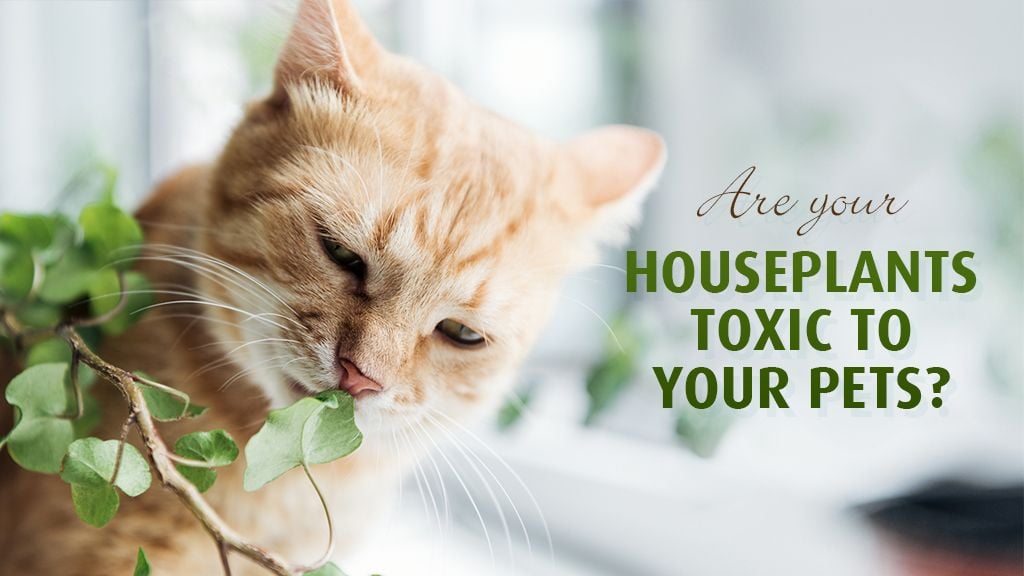Common Houseplants That Are Toxic to Your Pets
)
With lock-downs and isolation giving time for new hobbies, a lot of us have found our green thumbs... But have we created a risky home environment for our pets?
Pets are drawn to grabbing and nibbling on houseplants. Some of the most common houseplants are actually toxic to our pets, the effects can range from mild mouth irritations to severe toxicity and death.
Here are some examples of common plants that you should be aware of that are potentially toxic to our furry friends.
Importantly, if you're concerned that your pet has come into contact with a toxic plant, please call us immediately on (03) 9596 4804.
Lilies
Lilies are a common houseplant and floral gift, but they're also incredibly dangerous to our pets.
Lilies are particularly dangerous to cats, ingesting ANY PART of the plant, including the pollen, can cause rapid kidney failure and death. Kidney failure can occur within 48-72 hours.
The RSPCA recommends that cat owners should make sure their cats "never have access to lilies of any kind."
Symptoms usually occur within 24 hours and include:
- Vomiting
- Not eating
- Depression
- Lethargy
If you're concerned that your cat has come into contact with a lily and taken a bite, contact us immediately. Lily ingestion in cats is regarded as an emergency.
To dogs, lilies are less toxic but can cause symptoms like:
- Oral irritation
- Intense burning
- Vomiting
- Diarrhoea
Sago Palm
Common in tropical climates, the sago palm is one of the oldest plants we know. In fact, it's been around since prehistoric times!
Unfortunately, the sago palm is deadly toxic to both dogs and cats: every part of it can cause serious damage to their health and in many cases, death. This plant's scent is particularly alluring and may tempt a taste.
Like lilies, exposure to a sago plant is regarded as an emergency, requiring immediate veterinary attention, the main concern being liver failure.
Symptoms to look for include:
- Vomiting, can develop within minutes of ingestion
- Diarrhoea, sometimes with blood
- Drooling
- Refusal to eat
- Weakness and seizures
Aloe Vera
While great for us Australians when we spend a lot of time in the sun and forget our sunscreen, aloe vera isn't so great for pets as it contains saponins which are toxic to both dogs and cats.
When exposed and ingested, aloe vera can cause:
- Vomiting
- Diarrhoea
- Lethargy
- Tremors
- Issues to the central nervous system
Tomato Plant
Like many, you might have taken to growing your own fruit and vegetables in lock-down and planted a few tomato plants in pots or in the garden.
Tomatoes (potatoes, eggplant and capsicum too) are actually a relative to the nightshade family and are toxic to our furry friends. Both the tomato plant leaves and unripe fruits are toxic to our pets.
When affected, pets can experience:
- Weakness
- Gastrointestinal problems
- Drowsiness
- Dilated pupils
- Confusion
- Slow heart rate
- Diarrhoea
Pothos (and ivy varieties)
A common hanging or climbing houseplant, the devil's ivy, or pothos, is toxic to dogs and cats.
All parts of this plant contain calcium oxalate crystals which are like small needles when chewed and eaten. Sounds painful right?
Ingestion of pothos can cause:
- Vomiting
- Diarrhoea
- Abdominal pain
- Difficulty swallowing
- Intense burning to mouth
You should look for these symptoms and excessive drooling or pawing at the mouth if you suspect your pet may have come into contact with this plant.
Monstera Deliciosa or Swiss Cheese Plant
It's hard to mistake a monstera deliciosa and it's iconic leaves, it's a staple for any houseplant collector. Unfortunately, the monstera shares similar characteristics as the pothos and inside it's fibers you'll find calcium oxalate crystals too.
Toxic effects include:
- Oral irritation
- Pain and swelling of the mouth, tongue and lips
- Excessive drooling
- Vomiting
- Difficulty swallowing
Alternatives for your home
If you've got a green thumb which can't quit, here are some non-toxic houseplants to consider:
- Prayer plant
- Boston ferns
- Baby's Tears
- Haworthia pearl plant
- Orchid varieties
- African Violet
Minimising the risk
- Stay informed of potentially toxic plants before bringing plants home- avoid toxic plants all together
- Consider safe alternatives
- Keep plants out of reach of curious pets, hanging baskets can be a great alternative
- While some products suggest they deter pets from plants, this is not a guarantee
- Be wary of leaves falling or the potential of pots slipping onto the ground.
- Remember cats are a bit more ambitious than dogs when it comes to getting to places they shouldn't't be.
What to do if you suspect your pet has eaten a toxic houseplant
If you suspect your pet has ingested a toxic plant at home or on a walk, don't wait and see, seek veterinary advice immediately. Call us (03) 9596 4804. or if after hours call an Emergency Centre
| Tags:Client InformationHealth AdviceProactive Pet Care |
&geometry(126x115))